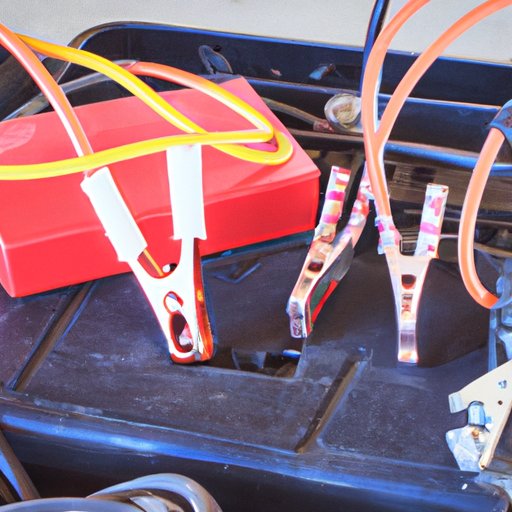Introduction
A jump start is a process used to revive a dead car battery by connecting it to another working battery. This process is commonly referred to as “jumping” the battery and can often be done with minimal tools and equipment. While jump starting a car can seem daunting, it is actually a relatively simple procedure that anyone can do with the right instructions.
In this article, we will provide a step-by-step guide on how to jump start your car. We’ll cover the importance of properly charging and connecting your battery, connecting the jumper cables, starting the booster vehicle, and more. So let’s get started!

Step 1: Check Your Battery
The first step in jump starting your car is to ensure your battery is properly charged and connected. If your battery is not properly charged or connected, it may not be able to receive enough energy from the other battery to start your car. To check your battery, you can use a multimeter to measure the voltage. The ideal voltage for a fully charged battery is 12.6 volts. If your battery is below 12.6 volts, it likely needs to be recharged.

Step 2: Use Jumper Cables
Once you have checked your battery and ensured it is properly charged and connected, the next step is to use jumper cables to connect your battery to another working battery. Jumper cables are cables with clamps on each end that are used to connect two batteries together. Be sure to use high-quality jumper cables that are rated for the amperage of your battery.
To connect the jumper cables to both batteries, first open the hood of both cars and locate the batteries. Then attach the positive cable to the positive terminal on both batteries and the negative cable to the negative terminal on both batteries. It is important to ensure the cables are securely attached and that they are not touching any metal surfaces.

Step 3: Start the Booster Vehicle
Once the jumper cables are connected, the next step is to start the booster vehicle. This is the vehicle that is providing power to your battery. Make sure the engine is running at a steady RPM and leave it running for a few minutes to allow the battery to charge.
Step 4: Start Your Car
After the booster vehicle has been running for a few minutes, attempt to start your car. If the battery has been sufficiently charged, your car should start. If it does not start, you may need to turn off the booster vehicle and try again.
Step 5: Disconnect the Cables
Once your car has successfully started, the final step is to disconnect the jumper cables in the reverse order they were connected in. Be sure to keep the cables away from any metal surfaces and make sure all connections are securely fastened before attempting to start your car.
Conclusion
Jump starting a car is a relatively simple process that anyone can do with the proper instructions. By following the steps outlined in this article, you can safely and effectively jump start your car. Be sure to take all necessary safety precautions when jump starting a car, such as wearing protective gear and using high-quality jumper cables. With the right knowledge and supplies, jump starting a car can be a breeze.
(Note: Is this article not meeting your expectations? Do you have knowledge or insights to share? Unlock new opportunities and expand your reach by joining our authors team. Click Registration to join us and share your expertise with our readers.)
